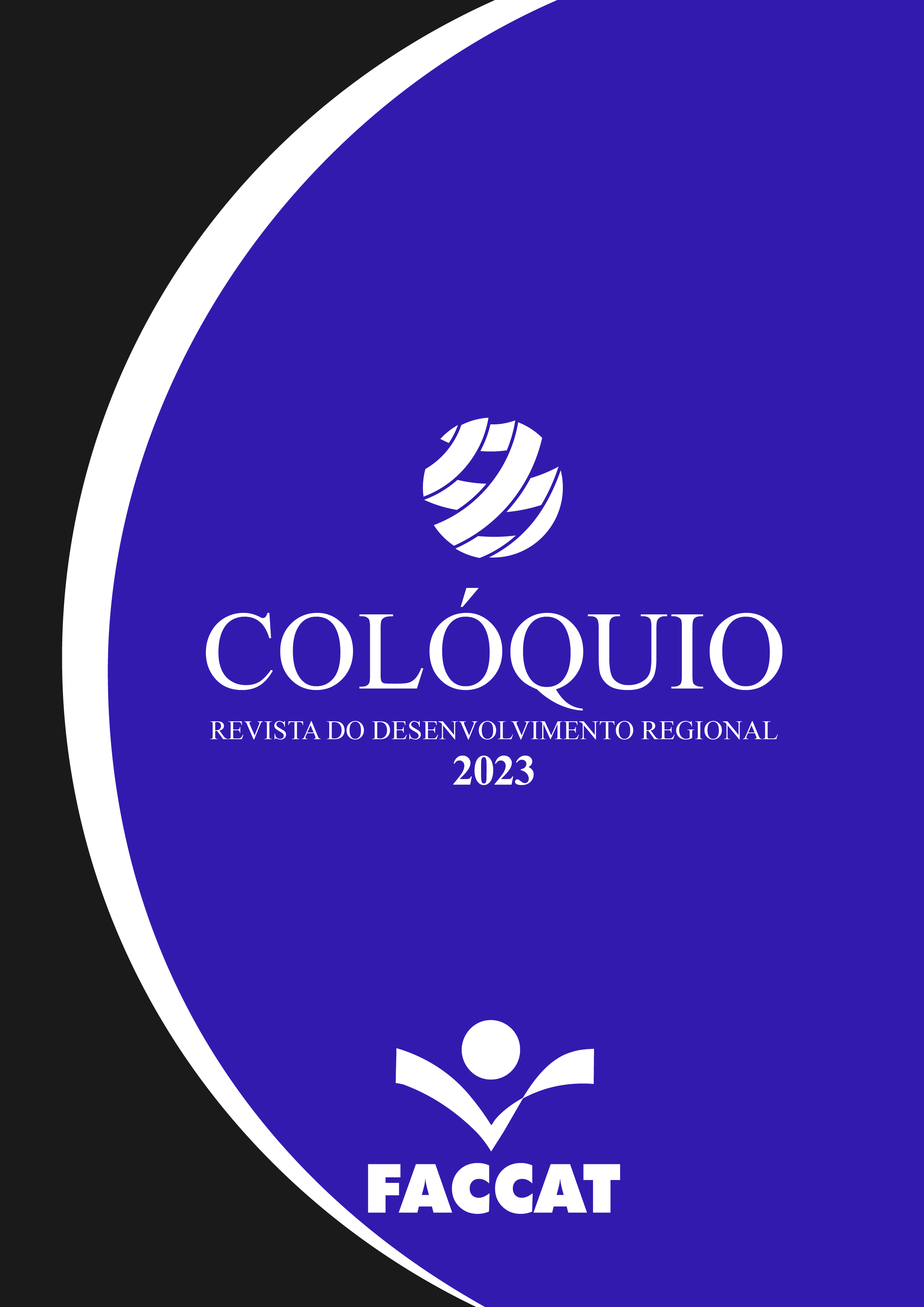Revisited technological capabilities matrix model for the pork industry
DOI:
https://doi.org/10.26767/coloquio.v20i3jul-set.2886Keywords:
Swine slaughtering and processing, Industrial swine production, InnovationAbstract
Technological capabilities are the ability to use, adapt, manage resources and technologies for production and generate innovations. Industrial swine production has specificities that demand coherent parameters with the economic-productive, and technological aspects to evaluate its technological capabilities. Through a qualitative approach, bibliographical and documentary research on technological capabilities and the pork industry was used. For this, besides the theoretical approach, the works of Sanjaya Lall (1987; 1992; LALL et al., 1994) were used as a base to structure a: revisited Technological Capabilities Matrix Model for the pork industry. New parameters and the scope of Systemic Innovation were incorporated, which complement and make the matrix adequate to analyze meat industries. The resulting matrix establishes four technological scopes (lines): Investment, Production/Operation, Systemic Innovation, and Relationship with the Economy. Each scope has parameters for the identification and categorization of the stage (columns) Basic, Intermediate and Advanced of technological capabilities. This work contributes to establish a theoretical-empirical framework, which allows a deeper analysis of the results and efforts that the agribusinesses have been making in the development of their capabilities. The revisited Matrix Model provides the appropriate instrument for this analysis, since it privileges the specific characteristics of this type of industry, as well as making it possible to bring new parameters to improve the analysis of technological innovation capabilities. Thus, we emphasize that the new model of analysis developed serves as a basis so that other agribusinesses, slaughtering and meat processing, such as chicken and beef, can be studied in future works
References
ABATE SEM DOR. Suinocultura industrial – Bem-estar animal. Avicultura Industrial e Suinocultura Industrial, 27 de jan. de 2020. Disponível em: <https://www.suinoculturaindustrial.com.br/imprensa/abate-sem-dor/20110407-154046-w965>. Acesso em: 15 de mar. 2023.
ASSOCIAÇÃO BRASILEIRA DE CRIADORES DE SUÍNOS (ABCS). Bem-estar animal na produção de suínos: frigorífico. Brasília: ABCS, 2016.
ASSOCIAÇÃO BRASILEIRA DE CRIADORES DE SUÍNOS (ABCS). Carne suína: a atual visão do consumidor. Brasília: ABCS, 2019.
BELL, M. Innovation Capabilities and Directions of Development. STEPS Working Paper 33, p. 67. Brighton: STEPS Centre, 2009. Disponível em <https://steps-centre.org/wp-content/uploads/bell-paper-33.pdf>. Acesso em: 05 de mar. 2023.
BELL, M., PAVITT, K. Technological accumulation and industrial growth: contrasts between developed and developing countries. Industrial and Corporate Change, Issue 2, p. 157-210, 1993.
BELL, M., PAVITT, K. The development of technological capabilities. In: HAQUE I.U., BELL, M.; DAHLMAN, C; LALL, S.; PAVITT, K. (Orgs.). Trade, Technology and International Competitiveness. Washington, DC: The World Bank, p.69-101, 1995.
BRASIL, MINISTÉRIO DA AGRICULTURA, PECUÁRIA E ABASTECIMENTO (MAPA). Projeções do Agronegócio: Brasil 2018/19 a 2028/29 projeções de longo prazo. 10. ed. Brasília: MAPA, 2019.
BRASIL, PRESIDÊNCIA DA REPÚBLICA. Decreto nº. 9.013, de 29 de março de 2017. Regulamenta a Lei nº 1.283, de 18 de dezembro de 1950, e a Lei nº 7.889, de 23 de novembro de 1989, que dispõem sobre a inspeção industrial e sanitária de produtos de origem animal. Disponível em: <https://www.in.gov.br/materia/-/asset_publisher/Kujrw0TZC2Mb/content/id/20134722/do1-2017-03-30-decreto-n-9-013-de-29-de-marco-de-2017-20134698>. Acesso em: 12 de mar. 2023.
CARVALHO, H. G.; REIS, D. R.; CAVALCANTE, M. B. Gestão da inovação. Curitiba: Aymará Educação, 2011.
DALLA COSTA, O. A. Efeitos do manejo pré-abate no bem-estar e na qualidade de carne de suínos. Tese (Doutorado em Zootecnia), Faculdade de Ciências Agrárias e Veterinárias – Unesp, Jaboticabal, SP. 2006.
FIGUEIREDO, P. N. Acumulação tecnológica e inovação industrial: conceitos, mensuração e evidências no Brasil. São Paulo Perspectiva, São Paulo, v. 19, n. 1, mar., p. 54-69, 2005.
FIGUEIREDO, P. N. Gestão da inovação: conceitos, métricas e experiências de empresas do Brasil. 2. ed. Rio de Janeiro: LTC, 2015.
GIL, A. C. Métodos e técnicas de pesquisa social. 6. ed. São Paulo: Atlas, 2008.
INSTITUTO BRASILEIRO DE GEOGRAFIA E ESTATÍSTICA (IBGE). Pesquisa Trimestral do Abate de Animais. Disponível em: <https://sidra.ibge.gov.br/pesquisa/abate/tabelas>. Acesso em: 17 dez. 2022.
KATZ, J. Aprendizaje tecnológico. Ayer y hoy. Revista da CEPAL (Número Extraordinário). Santiago de Chile: CEPAL, p. 63-82, 1998.
KATZ, J. Importación de tecnologia, aprendizaje local y industrialización dependiente. Washington: OEA, 1972.
LALL, S. Learning to industrialize: the acquisition of technological capability by India. London: Macmillan Publishers LTD, 1987.
LALL, S. Technological capabilities and industrialisation. World Development, vol. 20, nº 2, Oxford, p. 165-186, 1992.
LALL, S.; NAVARETTI, G.B.; TEITEL, S.; WIGNARAJA, G. Technology and Enterprise Development: Ghana Under Structural Adjustment. London: Macmillan Publishers LTD, 1994.
LALL, S. Competitiviness, technology and skills. Cheltenham: Edward Elgar Publishing, 2001.
LUDTKE, C. B.; CIOCCA, J. R. P.; DANDIN, T.; BARBALHO, P. C.; VILELA, J. A.; DALLA COSTA, O. A. Abate humanitário de suínos. Rio de Janeiro: Sociedade Mundial de Proteção Animal – WSPA BRASIL, 2010.
MARCONI, M. A.; LAKATOS, E. M. Técnicas de pesquisa. 6. ed. rev. ampl. São Paulo: Atlas, 2007.
MEURER, A. P. S. Análise da agroindústria canavieira nos estados do Centro-Oeste do Brasil a partir da matriz de capacidades tecnológicas. Dissertação (Mestrado em Desenvolvimento regional e do Agronegócio) – Universidade Estadual do Oeste do Paraná, Toledo, 2014.
SHIKIDA, P. F. A.; AZEVEDO, P. F.; VIAN, C. E. F. Desafios da agroindústria canavieira no Brasil pós-desregulamentação: uma análise das capacidades tecnológicas. Revista de Economia e Sociologia Rural, v. 49, p. 599-628, 2011.
SOUZA, E. C.; SHIKIDA, P. F. A.; MARTINS, J. P. Uma análise da agroindústria canavieira do Paraná à guisa da matriz de capacidades tecnológicas. Revista de Economia e Agronegócio, Viçosa, v. 3, n.3, p. 349-375, 2005.
TIDD, J.; BESSANT, J. Gestão da inovação. 5. ed. Porto Alegre: Bookman, 2015.
TIGRE, P. B. Gestão da inovação: a economia da tecnologia do Brasil. 1. ed. Rio de Janeiro: Elsevier, 2014.
UNITED STATES DEPARTMENT OF AGRICULTURE (USDA). Livestock and Poultry: PSD Reports Pork production – Trade. Disponível em: <https://apps.fas.usda.gov/psdonline/app/index.html#/app/downloads>. Acesso em: 17 dez. 2022.
VEGRO, C. L. R.; ROCHA, M. B. Expectativas tecnológicas para o segmento de carnes de aves e suínos. Informações Econômicas, SP, v. 37, n. 5, maio, p. 1-28, 2007.







